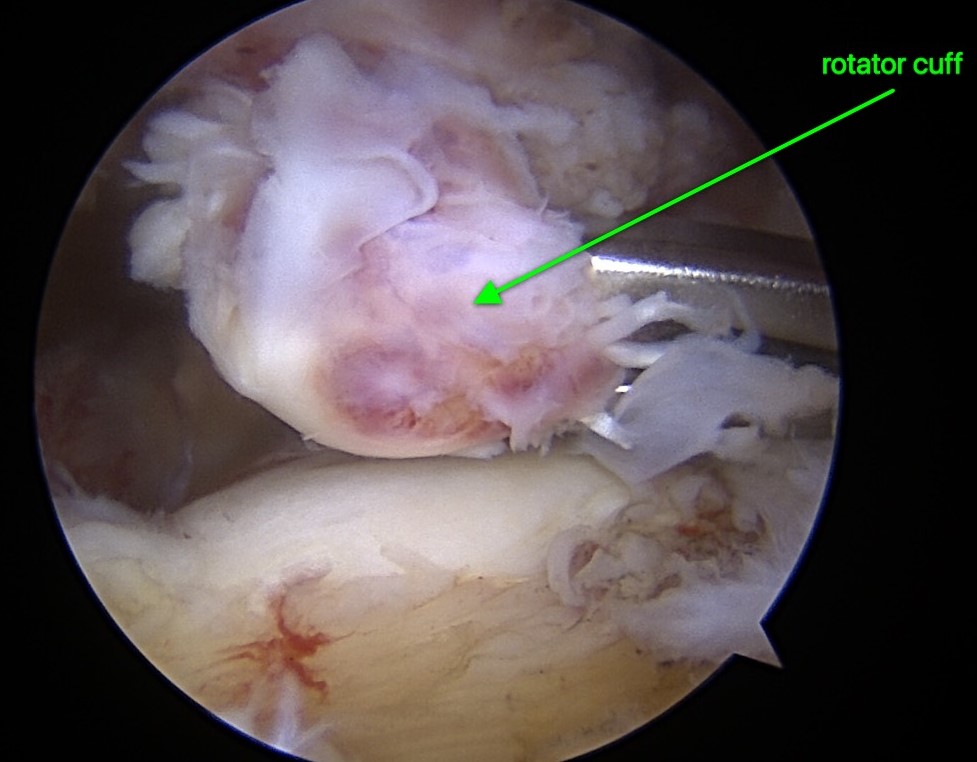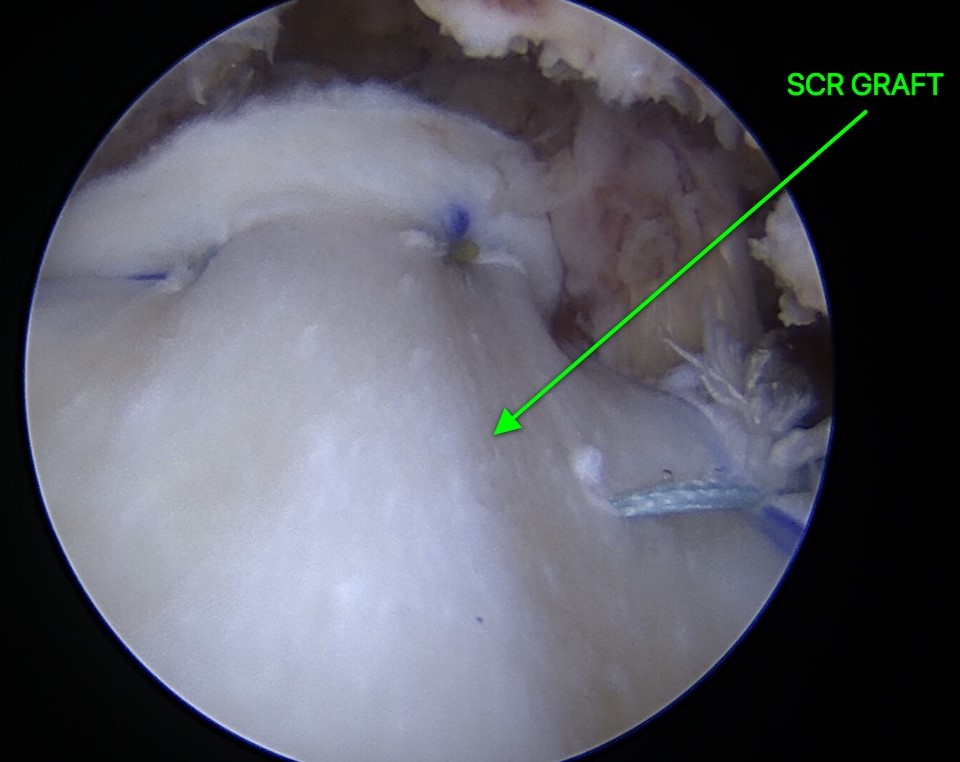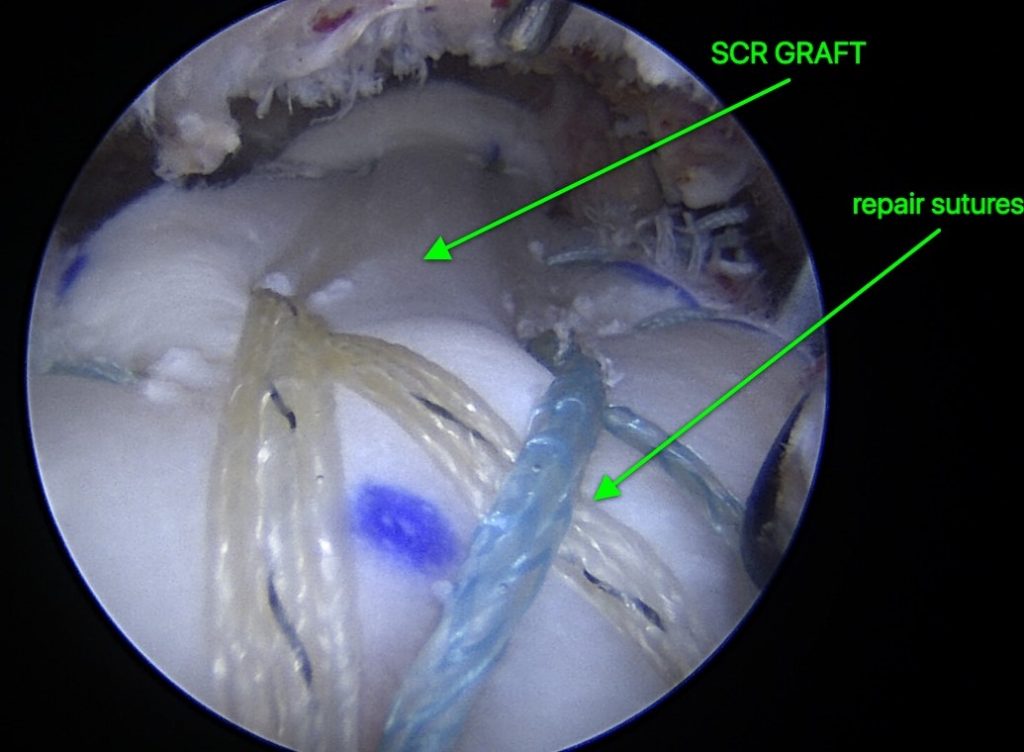Superior Capsular Reconstruction
Background

The Superior capsular reconstruction is a fairly new technique which compensates for an irrepairable rotator cuff tears. This arthroscopic procedure is minimally invasive and has been seen to give significant improvements to the patient’s shoulder strength as well as range of motion.
The rotator cuff helps maintain the appropriate relationship between the humeral head and the glenoid. With this well maintained relationship, the fulcrum created by the glenohumeral joint places appropriate tension on the surround shoulder muscles allowing for a fluid, non-painful range of motion. If the supraspinatus and infraspinatus are torn and cannot be repaired, the biomechanics of the shoulder are disrupted and the shoulder does not function properly. Over time, the humeral head can migrate proximally and lose the appropriate glenohumeral relationship. cause shoulder dysfunction and develop cartilage wear and arthritis in the joint. If the shoulder arrives at this degenerative state, a reverse total shoulder replacement is required. A superior capsular reconstruction seeks to maintain the glenohumeral relationship and adequate biomechanics of the shoulder to prevent shoulder degeneration, improve pain and maintain function.

Surgical Indications
A superior capsular reconstruction is indicated if the following conditions are met:
- Irrepairable cuff tear causing pain and dysfunction despite non-operative measures
- Little to no osteoarthritis of the glenohumeral joint
- Intact/repairable subscapularis
- Functional deltoid muscle
- Usually reserved for active patients who place higher demands on the shoulder
Rehabilitation

Rehabilitation is a key player in getting you back to your daily activities or participation in sports and recreational activities. A good physical therapy program will help you regain strength and range of motion. Therapy after surgery will progress in stages. Each patient is different and will progress through different stages at different times. Try not to be frustrated if you progress more slowly through your rehabilitation than others who have had rotator cuff surgery. Each patient, each injury, and each surgery is unique. Rehabilitation is a slow process and your commitment is key in having a successful outcome.
Generally speaking, the rehabilitation protocol for a superior capsular reconstruction follows that of a rotator cuff repair protocol (See rotator cuff repair for protocol).
Click on the following link to watch an animation of this procedure: https://youtu.be/F-YTC9UOJ0s
